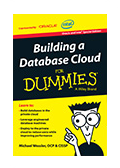
Oracle, a global provider of integrated cloud applications and platform services, announced it rolled out a new cloud analytics offering for its shipper customers using its Oracle Fusion Cloud Supply Chain & Manufacturing (SCM) platform, which connects shippers’ supply networks with an integrated suite of cloud business applications.
Earlier this month, Oracle, a global provider of integrated cloud applications and platform services, announced it rolled out a new cloud analytics offering for its shipper customers using its Oracle Fusion Cloud Supply Chain & Manufacturing (SCM) platform, which connects shippers’ supply networks with an integrated suite of cloud business applications.
Oracle said that the new cloud analytics provide shippers with the needed insights “to detect, understand, and resolve issues faster throughout the supply chain.” And they added that in leveraging Oracle Analytics Cloud and Oracle Autonomous Data Warehouse, the new Oracle Fusion SCM Analytics provides shippers with pre-built metrics and dashboards that utilize machine learning capabilities that help shippers on various fronts, including reducing costs, ensuring customer satisfaction, and driving revenue.
“Supply chains are under immense scrutiny as organizations face new and unexpected disruptions,” said T.K. Anand, senior vice president, Oracle Analytics, in a statement. “Now more than ever, organizations need real-time insights into every element of their supply chain to help them make the right decisions and get ahead of disruptive events and changing customer expectations. With Oracle Fusion SCM Analytics, customers can quickly uncover supply chain performance insights, identify issues, increase efficiency, and minimize supply chain disruption.”
Jon Chorley, GVP of SCM Product Strategy and Chief Sustainability Officer, Oracle, provided LM with a detailed overview this new offering in interview.
- LM: What drove the need for Oracle to roll out Oracle Fusion SCM Analytics?
- LM: What are the main benefits of the new analytics capabilities for shipper customers?
- LM: Can you please provide a basic example of how it functions?
This example highlights how Oracle Fusion SCM Analytics provides customers with new ways of working with data by using machine learning-powered predictions, which helps organizations gain actionable insights to improve supply chain performance – and ultimately deliver the best possible customer experience.
Read more at Oracle releases new cloud analytics offering for Oracle Fusion SCM offering
Subscribe to us to get updates and leave your comment below for discussion.













































